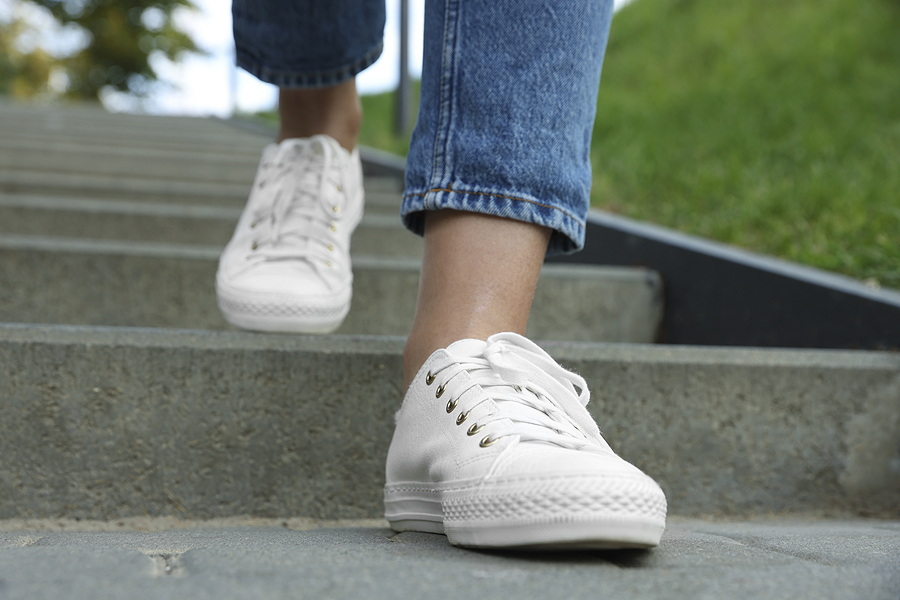Aside from often being a daily necessity, stairs build lower body strength. So it’s worth ensuring we use the right parts of our body to go up and down them.
Walking upstairs
It might sound strange, but we’re designed to use the back of our lower body to propel us forward and upstairs. This means using the big muscles of our bottom, or glutes.
Leaning slightly forward as we climb stairs puts our glutes in a more advantageous position.
A lot of us rely too much on the front of our thighs — and our knees — for this. The thighs are certainly active in stair climbing but aim to give the glutes the lead role.
Try it out. As you stand at the bottom of the stairs on one leg and prepare to step up, lean a bit forward from the hips, squeeze the glutes of your standing leg and use this to drive your step up.
In addition to our glutes, we also need to use our calves and feet to take us upstairs.
We’ll be more likely to rely on the front of our legs if we’re weak through the glutes or calves, or if we have stiff ankles. In fact, walking stairs is good for our ankle mobility and circulation.
Coming down
Walking downstairs is different, but we still need our glutes.
Again, start by leaning slightly forward from the hips with your bottom a little behind you. As you stand on one leg to take the other one down, the glutes of your standing leg hold you steady. They stabilise our hips and pelvis.
When we walk upstairs our thigh muscles contract, or shorten. Walking down, they lengthen. The thigh on our back leg helps to lower us with control as our front foot approaches the step below.
It’s important to watch the position of our feet on stairs, and make sure we’re not walking pigeon-toed. That toe-in isn’t good for our knees (or our arches), but it also doesn’t allow for the best contact with the step, making it easier to trip.
If you notice you do that, aim for a tiny turnout of about 5 degrees instead. That will also help engage the outside stabilising glute muscles.
Stairs are an easy place to fall, so take these precautions.
- Make sure they’re well lit.
- Wear non-slip, properly fitting shoes; avoid footwear that can come loose.
- Use a handrail if you need to (and get one installed if you need to).
- Indoors deal with loose rugs, carpet tears, broken tiles or anything else you could trip or slide on. Outdoors, look out for damaged surfaces.
- Take care in clothes such as maxi skirts or long flowy pants if you could step on them. The same goes if you’re carrying something that can trail on the floor — sheets, towels, electrical cords and so on. Maybe dogs that get under your feet belong here too.
- Beware of slippery surfaces, such as polished wood, polished concrete, or ceramic tiles.
- Be careful of water or anything spilt on stairs. Mop it up straight away.
- Make sure you can see where you’re going when you carry things up and down stairs.
- Finally, pay attention and don’t be in a hurry. Famous last words, right?
Stairs can help us stay mobile and strong, but unless we’re vigilant they can be a source of grief too. Resolve to use them well.
Photo Source: Bigstock

